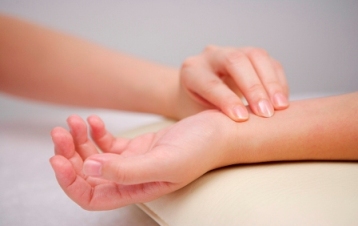SUN TEN Quarterly Newsletter Winter 2011: Aversion to Wind and Cold: A Case Study
Aversion to Wind and Cold: A Case Study
By Dr. Jyh-Sheng You
Aversion to or dread of wind and cold refers to being sensitive to and uncomfortable in cold temperatures. This symptom is commonly seen in both patterns of external contraction and internal damage. Historical documents contain the terms ”wu han” (aversion to cold), ”wu feng” (aversion to wind) and ”wei han” (dread of cold). It has generally been thought that aversion to wind and aversion to cold are different. It is said those who are averse to cold have a feeling of sensitivity or uncomfortableness in cold temperatures even without being exposed to wind, and can have generalized coldness even though they may be in a closed room or covered by a blanket sitting next to a warm fire. Those who are averse to wind, it is said, begin to feel cold when they are exposed to wind. In the clinic however, those who are averse to cold are generally also averse to wind, while those who are averse to wind generally also have some aversion to cold. The terms ”aversion to cold”, ”aversion to wind” and ”dread of cold” manifest similarly and all of them can be included in the term ”aversion to cold”.

CASE STUDY
[Patient Information]
Patient: Mr. Fu Case Number: 185189 Gender: male Occupational Status: Retired Age: 78 First Clinic Visit:
[Chief Complaint]
Has felt avers to cold for one month
[Medical History]
The patient said that 20 years prior he had been diagnosed with hypertension, and had been taking western medicines to treat it ever since. With the help of medication he managed to keep his blood pressure between 120-130/60-70 mmHg. At the time his health had been consistently good and he reported having no other problems. In March of 2009, he began to have pain in his right knee and was diagnosed as having gout. Later on he experienced bleeding from his conjunctiva and his vision changed for the worse. In April of the same year, he was admitted to Taipei Veteran’s
[Diagnosis]
Deficiency of upright Qi with latent pathogens, compromised defense Qi, and inhibition of the pivot mechanism.
[Treatment Principle]
Rotate the pivot mechanism, support the upright Qi and expel pathogens, boost the Qi and fortify the defense Qi.
Join our member to get full-text article! Join Free!
[Prescription] for members only
[Treatment Course] for members only
[Thoughts on Diagnosis and Treatment] for members only
[About the Author] for members only